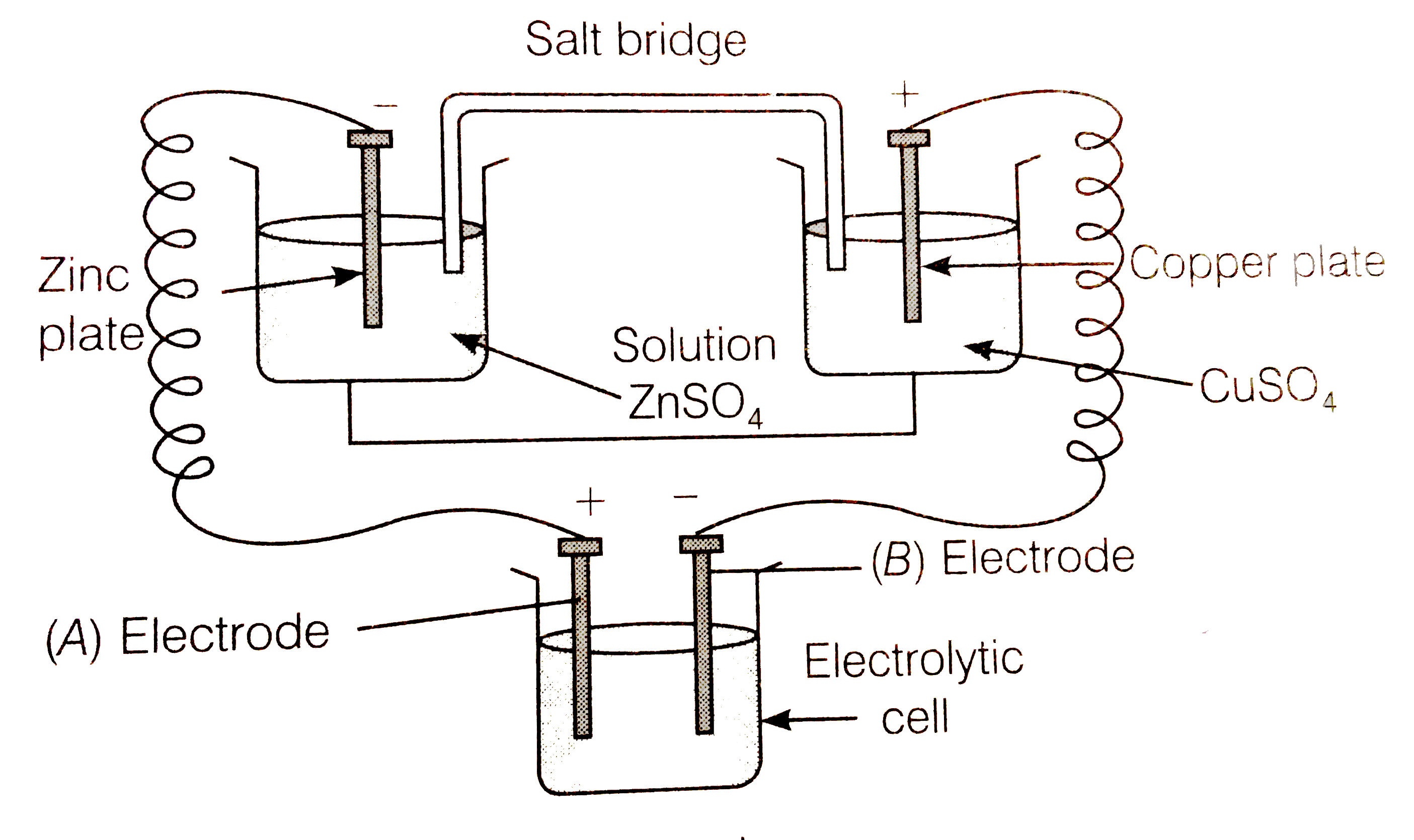What is an electrochemical cell or galvanic cell?
Step-by-Step Solution
1. Definition of Electrochemical Cell: An electrochemical cell, also known as a galvanic cell, is a device that converts chemical energy into electrical energy.
2. Spontaneous Chemical Reactions: The process that occurs in a galvanic cell is based on spontaneous chemical reactions. This means that the reactions occur naturally without the need for external energy input, and they have a negative Gibbs free energy change (ΔG < 0).
3. Components of the Cell: A galvanic cell consists of two electrodes: the anode and the cathode. The anode is where oxidation occurs, and the cathode is where reduction takes place.
4. Oxidation and Reduction: In the context of the galvanic cell:
- Oxidation: This is the process where a substance loses electrons. It occurs at the anode.
- Reduction: This is the process where a substance gains electrons. It occurs at the cathode.
5. Generation of Electrical Energy: As the spontaneous chemical reactions take place, they generate electrical energy, which can be harnessed to do work.
Summary
In summary, an electrochemical cell or galvanic cell is a device that converts chemical energy into electrical energy through spontaneous chemical reactions, involving oxidation at the anode and reduction at the cathode.
---
- Oxidation: This is the process where a substance loses electrons. It occurs at the anode.
- Reduction: This is the process where a substance gains electrons. It occurs at the cathode.
In summary, an electrochemical cell or galvanic cell is a device that converts chemical energy into electrical energy through spontaneous chemical reactions, involving oxidation at the anode and reduction at the cathode.
Topper's Solved these Questions
- BOOK - ICSECHAPTER - ELECTROCHEMISTRYEXERCISE - EXERCISE (PART-II Descriptive Questions)(SHORT ANSWER QUESTIONS)38videos
ELECTROCHEMISTRY
- BOOK - ICSECHAPTER - ELECTROCHEMISTRYEXERCISE - EXERCISE (PART-II Descriptive Questions)(LONG ANSWER QUESTIONS)33videos
ELECTROCHEMISTRY
- BOOK - ICSECHAPTER - ELECTROCHEMISTRYEXERCISE - EXERCISE (PART-I Objective Questions) (Choose the correct alternative)25videos
ELECTROCHEMISTRY
- BOOK - ICSECHAPTER - DISTINCTION BETWEEN PAIRS OF COMPOUNDS EXERCISE - QUESTIONS155videos
DISTINCTION BETWEEN PAIRS OF COMPOUNDS
- BOOK - ICSECHAPTER - GENERAL PRINCIPLES AND PROCESSES OF ISOLATION OF ELEMENTS EXERCISE - EXERCISE (PART-I ( OBJECTIVE QUESTIONS )) (Fill in the blanks)60videos
GENERAL PRINCIPLES AND PROCESSES OF ISOLATION OF ELEMENTS
Similar Questions
Electrochemical Cells
View SolutionIn a galvanic cell .
View SolutionName the type of reaction that occurs at anode in an electrochemical cell. Give an example.
View SolutionWrite three differences between electrochemical cell and electrolytic cell.
View SolutionWhich set of coditions are correct for spontaneity of a electrochemical cell reaction?
View SolutionConsider the following diagram in which an electrochemical cell is coupled to an electrolytic cell. What will be the polarity of electrodes 'A' an d 'B' in the electrolytic cell?
 View Solution
View SolutionIf an electrochemical cell is made in which current does not flow, what it suggest ?
View SolutionWhat is the sign of ΔGΘ and the values of K for an electrochemical cell for which EΘcell = 0.80volt?
View SolutionState true or False
Cathode is negative terminal both in electrochemical and electrolytic cells.View SolutionAn electrochemical cell has two half cell reaction as, A2++2e−→A,E0=0.34V
X→X2++2e−,E0=+2.37V. The cell voltage will beView Solution

